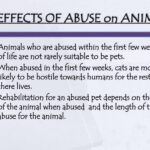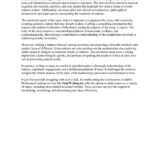In November 2019, President Trump signed a significant piece of legislation aimed at combatting animal cruelty, known as the Preventing Animal Cruelty and Torture (PACT) Act. This law extends federal protections to various animals, yet it raises a crucial, lingering question: Does this law include farm animals? This inquiry is not just a matter of parsing legislative language; it touches upon ethical considerations, societal norms, and the broader implications for animal welfare in the agricultural sector.
At first glance, the PACT Act represents a landmark victory for animal rights advocates. It criminalizes the intentional acts of animal cruelty at the federal level, establishing a framework that allows for more rigorous prosecution of offenders. The law specifically targets egregious acts of cruelty, such as crushing, burning, drowning, and suffocating animals. However, within the scope of this legislation, farm animals seem to exist in a nebulous space, potentially exempt from the protections afforded to domestic pets and wildlife.
This leads us to an important consideration: the industrialization of agriculture has resulted in the commodification of farm animals. Crammed into overcrowded pens and subjected to grueling conditions, many livestock animals endure unimaginable suffering. If the PACT Act is designed to protect certain species of animals, does that distinction extend to those raised for food? Can the law traverse the boundaries set by agricultural interests?
To assess whether the PACT Act encompasses farm animals, one must explore the text of the law. The legislation explicitly defines “animal” as any non-human mammal, reptile, bird, or amphibian. Notably absent from the definition, however, are explicit mentions of poultry and livestock, categories that include cattle, pigs, sheep, and chickens. By virtue of this omission, a considerable gap in protections emerges, leaving many farm animals vulnerable.
The reality is that while the PACT Act aims to create a deterrent against cruelty, the conditions under which farm animals are raised are often shielded by agricultural exemptions and industry practices that prioritize profit over welfare. Factory farming is rife with practices that many would consider cruel. These include extreme confinement, mutilations without anesthetics, and rapid growth promotion through hormone use, resulting in physical ailments that are commonplace in the industry.
The question then evolves: should farm animals be considered subjects of the same moral and legal standards as pets? Proponents for animal rights posit that sentience, the capacity to feel pain and suffering, is inherent in all animals. Therefore, ethically, they argue, farm animals deserve protections that reflect their sentience.
Legislative protections for farm animals vary significantly across state lines. Some states have implemented laws that address specific concerns, such as prohibiting certain confinement techniques or requiring humane treatment during transport. However, these regulations are often inconsistent, leaving ample room for exploitation and neglect. In contrast, non-farm animals, particularly pets, enjoy a patchwork of protections that differ from those afforded to their farm counterparts, leading to discrepancies in how society values different species.
Considering the potential for change, there is room for advocacy groups to push for a reevaluation of the PACT Act and its definition of “animal.” Changes to the legislative framework could promote a more inclusive stance on animal welfare, extending protections to farmed animals. This would signify a cultural shift, recognizing that our interactions with animals, regardless of their economic utility, reflect our moral compass as a society.
Some may argue that the agricultural industry is specifically tailored to supply food for human consumption, which complicates the conversation around animal rights. Yet, as societal awareness of animal welfare continues to grow, consumers increasingly demand transparency and ethical treatment in food production. Movements advocating for cage-free eggs, grass-fed beef, and humane farming practices are gaining traction, indicating a burgeoning recognition that animals in agriculture deserve dignified treatment.
Moreover, the environmental impact of factory farming has gained attention, further complicating the narrative surrounding farm animals. Land degradation, water pollution, and greenhouse gas emissions stemming from industrialized farming practices raise alarming questions about sustainability. Recognizing farm animals as sentient beings may not only lead to increased protections but also foster a shift toward more sustainable agricultural practices beneficial to the ecosystem.
Ultimately, the question of whether Trump’s PACT Act includes farm animals is not merely a legal inquiry; it is the crux of the ongoing dialogue about the treatment and perception of all animals in our society. As advocates continue to champion for the well-being of all creatures, the potential for legislative reform remains an opportunity for dialogue, growth, and ethical evaluation of our relationship with the animal kingdom.
In conclusion, navigating the complex landscape of animal welfare legislation requires a comprehensive understanding of ethics, cultural values, and economic interests. The PACT Act represents a step forward, but it beckons for further introspection and advocacy, urging us to refine our perceptions and protections for farm animals. By redefining the parameters of animal welfare laws, we challenge ourselves to reconcile the dichotomy between human interests and the rights of animals, ultimately fostering a more compassionate community.








